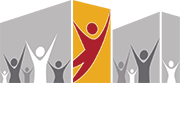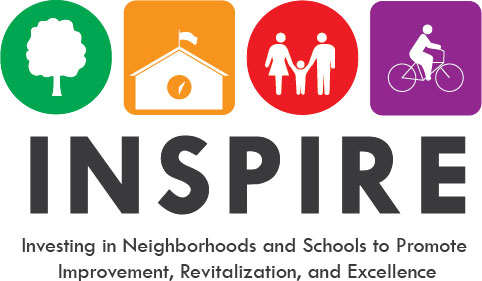Community & Economic Development
Background
The Department of Planning is conducting a planning program for the neighborhoods around each of the new or renovated schools. The program is called INSPIRE, which stands for Investing in Neighborhoods and Schools to Promote Improvement, Revitalization, and Excellence.
Overview
The INSPIRE plans focus on the quarter-mile surrounding each school to leverage the investment in the school and enhance the connection between the school and the neighborhood. Plans articulate the community’s vision for guiding private investment as well as identify specific, implementable public improvements in areas such as transportation, housing, and open space to improve the surrounding neighborhood so that it can better support the school.
Guiding Principles
Stronger schools lead to stronger neighborhoods
Millions of dollars of investment in schools can serve as a trigger point for additional investment in the surrounding neighborhood. The plans provide a vision to INSPIRE and guide that investment. The plans can serve as marketing tools to attract private investment and/or work plans for community-led development activities.
Stronger neighborhoods lead to stronger schools
A safe and stable neighborhood is fundamental for providing students and families with a healthy living environment, where children are more likely to attend school and have better outcomes. The plans include specific implementable recommendations for how to improve the surrounding neighborhood environment and improve quality of life for students, their families, and all neighborhood residents.
Planning Process
Board of School Commissioners approval of the feasibility studies depicting preferred school design options for each site will trigger the kick-off of the INSPIRE community engagement and planning process for the surrounding neighborhoods.
Gathering Information
Stakeholders will identify existing conditions around the school and identify strengths, weaknesses, and opportunities. Information will be gathered through reviewing existing plans, neighborhood history, and demographic profiles and conducting walking tours, surveys, workshops, and focus groups.
Drafting and Reviewing Recommendations
Planning Department staff will create draft recommendations based on stakeholder input during the information gathering phase of the planning process. Stakeholders will review, refine, and prioritize the draft vision and recommendations.
Writing and Reviewing the Plan
Planning Department staff will develop a draft plan. Stakeholders will review the draft plan document prior to adoption by the Planning Commission.
Implementation
The plan will identify specific implementation actions that will fall into four categories:
Partner Commitments
The planning process will include all willing partners and stakeholders in developing and implementing recommendations. Plans will identify commitments from institutions, businesses, community development corporations, community associations, and other partners to help implement specific plan recommendations.
Agency Operations
Focusing on a limited geographic area will allow plans to include detailed recommendations for specific sites where coordinated, strategic but relatively minor public improvements using agency operation funds can make a big difference. These improvements might include crosswalks, code enforcement, tree trimming/planting, etc.
Priority Areas for Citywide Initiatives
Many of the recommendations in the plans will align with existing citywide initiatives, such as Safe Routes to School or Blight Elimination. The planning process will help city agencies implement these initiatives in ways that will best leverage the investment in the schools.
For more information, please contact
Jaffa Weiss at 410-396-5937 and/or Jaffa.Weiss@baltimorecity.gov.
Click HERE to view the INSPIRE website.





